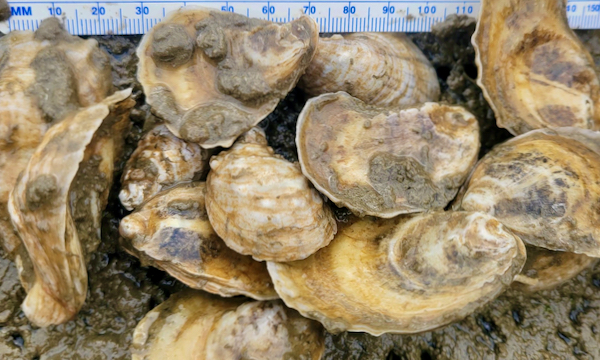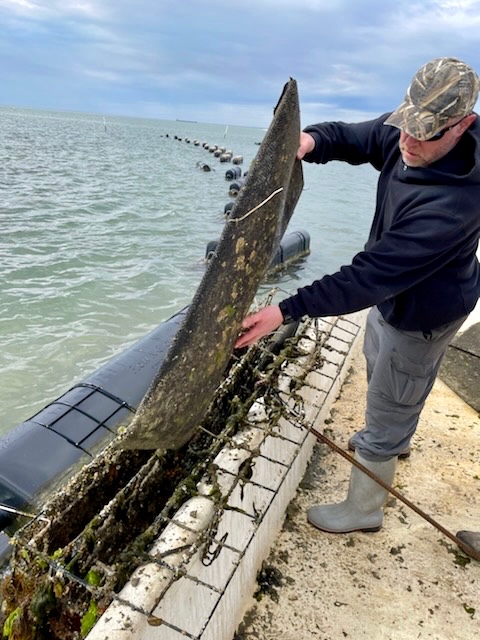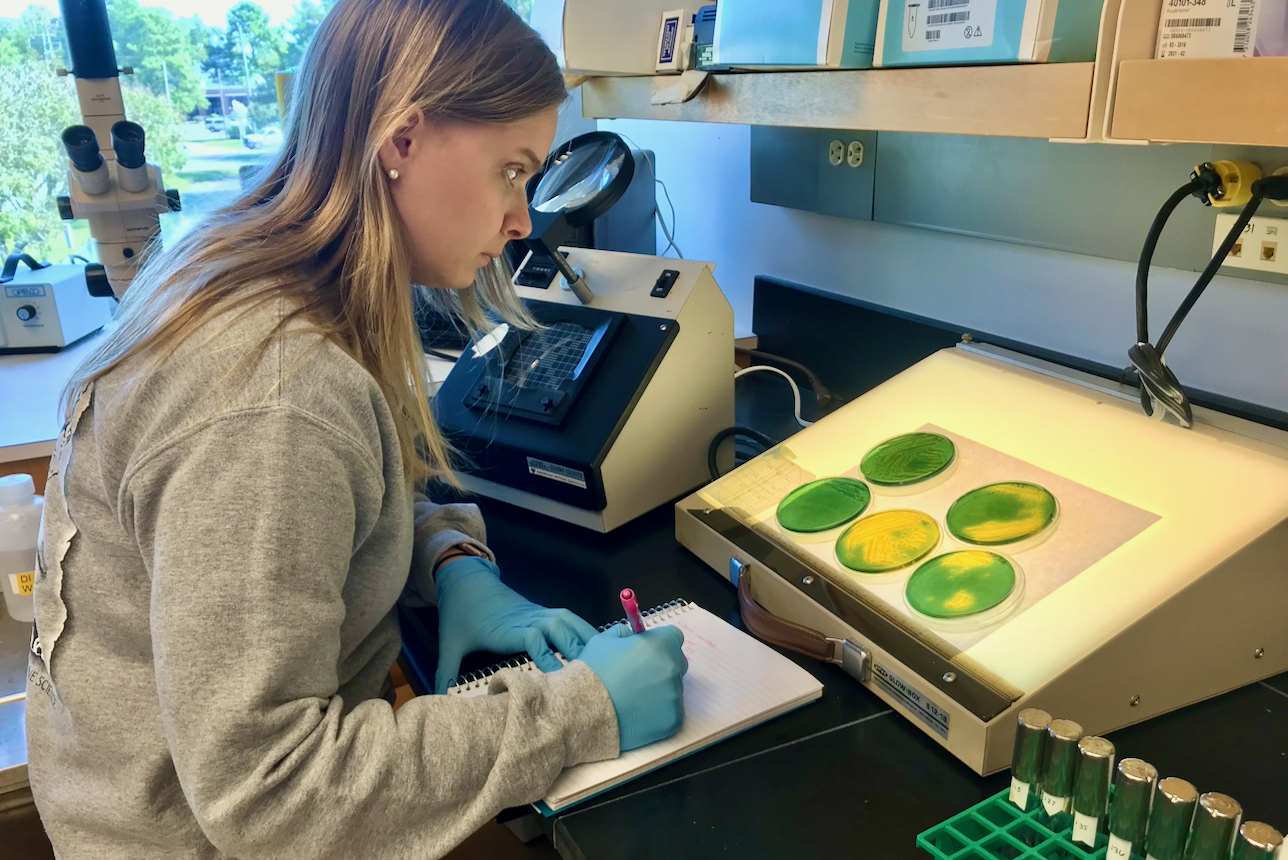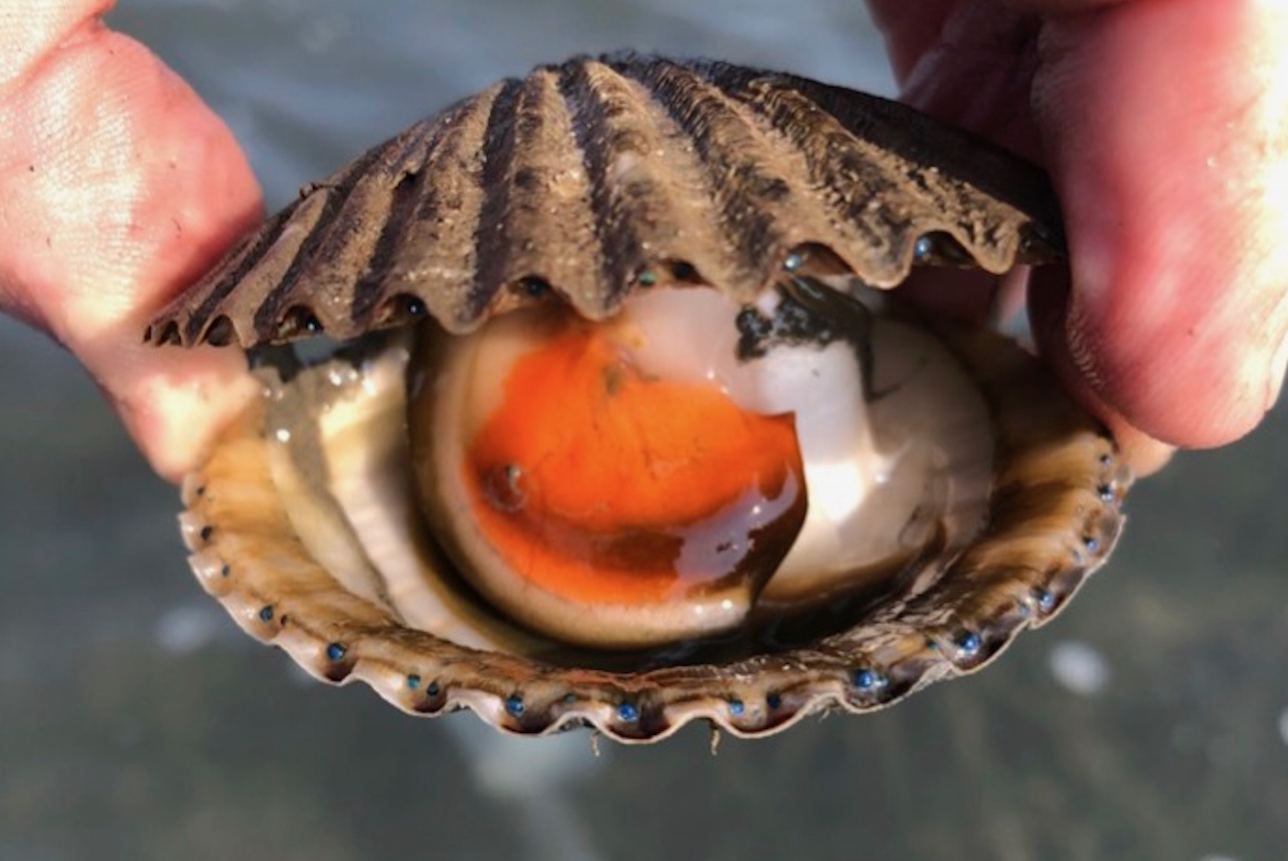VIMS researchers dominate national aquaculture grant competition
Researchers at William & Mary’s Virginia Institute of Marine Science received 5 of the 44 grants awarded in 2022 by NOAA Fisheries’ Saltonstall-Kennedy Program. This annual nationwide grant competition—established by Congress in 1954—is designed to enhance fisheries and marine aquaculture industries throughout the U.S.
Of the 37 institutes or agencies that submitted successful proposals in the latest award cycle, VIMS was the only one to garner more than two winning proposals. Thirty-three entities earned a single award, while three other entities earned two apiece: the University of Hawaii, the University of Maine, and the Pacific Islands Fisheries Group. VIMS won a full third of the 15 grants awarded in the competition’s aquaculture category, for a total of $1.5 M in research funding.
 Overall, NOAA considered 270 pre-proposals and received 137 full proposals during the 2022 Saltonstall-Kennedy (S-K) award competition. The 44 successful awards amount to $11.8 M in research funding and will be disbursed to institutes or agencies in 14 states and one U.S. territory: Alabama, Alaska, California, Connecticut, Florida, Hawaii, Maine, Massachusetts, New York, N. Carolina, Oregon, S. Carolina, Virginia, Washington, and the Commonwealth of the Northern Mariana Islands. VIMS was the only Virginia institute or agency to earn an award.
Overall, NOAA considered 270 pre-proposals and received 137 full proposals during the 2022 Saltonstall-Kennedy (S-K) award competition. The 44 successful awards amount to $11.8 M in research funding and will be disbursed to institutes or agencies in 14 states and one U.S. territory: Alabama, Alaska, California, Connecticut, Florida, Hawaii, Maine, Massachusetts, New York, N. Carolina, Oregon, S. Carolina, Virginia, Washington, and the Commonwealth of the Northern Mariana Islands. VIMS was the only Virginia institute or agency to earn an award.
Dr. Derek Aday, VIMS Dean & Director, says “We’re delighted with our success during this year’s S-K competition. It reflects the national prominence of our shellfish aquaculture program; the vitality of our partnerships with shellfish growers; and the continuing excellence of our faculty, staff, and students.”
Dr. Bill Walton, Acuff Professor of Marine Science and coordinator of the Shellfish Aquaculture Program at VIMS, says “With these awards, VIMS researchers will be able to respond to questions asked by the aquaculture industry here in Virginia and elsewhere: how to improve hatchery performance, increase yields, advance product safety, and diversify production. This is collaborative science for solutions in support of sustainable shellfish aquaculture.”
The 5 successful proposals
Four of VIMS grant awards pertain to oyster aquaculture, while one focuses on the farming of Bay scallops in the seaside bays of Virginia’s Eastern Shore.
Dr. Bongkeun Song, Clark & Elizabeth Diamond Professor at VIMS, is the lead on a project whose goal is to further test and refine “prebiotics” designed to enhance the growth of oyster larvae and seed in hatchery systems.  Prebiotics are food for “good” bacteria, or probiotics, within the gut of baby oysters. “Our overarching goal,” says Song, “is to develop a prebiotic that is easily adaptable for use in shellfish hatcheries to help decrease juvenile mortality and increase profitability.”
Prebiotics are food for “good” bacteria, or probiotics, within the gut of baby oysters. “Our overarching goal,” says Song, “is to develop a prebiotic that is easily adaptable for use in shellfish hatcheries to help decrease juvenile mortality and increase profitability.”
Dr. Hamish Small, a research assistant professor at VIMS, will lead a field and laboratory study to better understand how diploid and triploid oysters respond to stressors such as abnormally warm water or limited food, with the goal of better understanding the genetic factors involved in mortality of triploid oysters.  Triploids—whose extra set of chromosomes renders them incapable of reproduction—are favored by oyster farmers because they grow faster than diploids and maintain higher meat quality during spawning. However recent unexplained die-offs of farmed triploids have resulted in significant economic impacts to some growers.
Triploids—whose extra set of chromosomes renders them incapable of reproduction—are favored by oyster farmers because they grow faster than diploids and maintain higher meat quality during spawning. However recent unexplained die-offs of farmed triploids have resulted in significant economic impacts to some growers.
“Our study will help define the genetic pathways by which oysters respond to stress,” says Small. “If we can uncover a relationship between gene expression and mortality, we could incorporate these data into our ABC breeding program to produce oyster lines with greater resistance.”
Dr. Juliette Smith, a VIMS associate professor, will direct a project designed to better understand a new but persistent disease syndrome among farmed oysters, and to explore ways for growers to avoid or minimize its symptoms and impacts.
 “We saw disease in oyster larvae at hatcheries in Maine, New York, and Virginia during 2020 and again in 2021, resulting in production failures that decreased seed output by up to 40 percent,” says Smith. Affected larvae showed signs of failed digestion despite a stomach full of microalgal food, and a preliminary study revealed a link between larval deformities and unknown algal byproducts. Researchers suspect these byproducts originate with algae in natural waters and are then pumped into a hatchery through its flow-through plumbing system.
“We saw disease in oyster larvae at hatcheries in Maine, New York, and Virginia during 2020 and again in 2021, resulting in production failures that decreased seed output by up to 40 percent,” says Smith. Affected larvae showed signs of failed digestion despite a stomach full of microalgal food, and a preliminary study revealed a link between larval deformities and unknown algal byproducts. Researchers suspect these byproducts originate with algae in natural waters and are then pumped into a hatchery through its flow-through plumbing system.
“We’ll build on the previous study through a partnership with three East Coast hatcheries,” Smith says. “We plan to test two mitigation strategies that can hopefully be adopted by hatcheries all along the East Coast. Identifying the seasonality of the disease will indicate when these strategies can be applied most effectively.”
Dr. Corinne Audemard, a senior research scientist at VIMS, will study whether selective breeding of oysters influences levels of Vibrio, a type of bacteria that occurs naturally in oysters and can sicken people who consume raw oyster products.  The research may help growers produce oysters that are safer for human consumption.
The research may help growers produce oysters that are safer for human consumption.
“We currently manage the threat of Vibrio through broad measures that don’t fully account for the wide range of bacterial concentrations found in individual oysters,” says Audemard. “Building on results from previous studies, we’ll evaluate how the health of individual oysters from different genetic lines and grown in waters of different salinities impact variations in bacterial levels.” The ultimate goal, she says, is “to determine whether we could use the lower levels of Vibrio seen in some oyster lines as another selective trait in our breeding programs.”
The fifth VIMS proposal to earn funding during NOAA’s 2022 Saltonstall-Kennedy competition was submitted by Dr. Richard Snyder, professor and Director of VIMS’ Eastern Shore Lab in Wachapreague.
“Our project will not only continue to restore bay scallops to Virginia’s coastal bays for their ecological benefits and a recreational fishery, but to raise awareness of bay scallop culture as a viable business enterprise,” says Snyder. “Market price points are now reaching levels where this species may be successfully grown commercially.”
 Scientists and staff at the ESL have been growing bay scallops for wild restoration since 2009, and will now partner with two commercial aquaculture partners to further test different grow-out methods, develop plans for a small-scale scallop hatchery, and stimulate market demand.
Scientists and staff at the ESL have been growing bay scallops for wild restoration since 2009, and will now partner with two commercial aquaculture partners to further test different grow-out methods, develop plans for a small-scale scallop hatchery, and stimulate market demand.
“Getting commercial growers working with bay scallops and stimulating market avenues will increase the visibility of this species as a viable aquaculture enterprise,” says Snyder. “Demonstrating the feasibility of culturing bay scallops or a combination of bay scallops and hard clams would create alternative opportunities for watermen and the Eastern Shore economy.”
